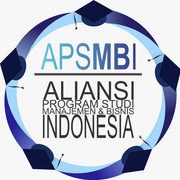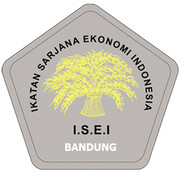Financing Private Universities in a Time of Declining Enrolments in Ghana
Abstract
Keywords
References
Abdul-Rahaman, N., Rongting, Z., Wan, M., Iddrisu, I., Rahaman, A. B. A., & Amadu, L. (2020). The impact of government funding on senior high enrolment in ghana. South African Journal of Education, 40(4), 1–10. https://doi.org/10.15700/saje.v40n4a1648
Aina, C., Baici, E., Casalone, G., & Pastore, F. (2022). The determinants of university dropout: A review of the socio-economic literature. Socio-Economic Planning Sciences, 79(June 2020), 101102. https://doi.org/10.1016/j.seps.2021.101102
Akplu, H. F. (2016). Private Participation in Higher Education in Sub- Experience. 20–22.
Alamri, H. A., Watson, S., & Watson, W. (2021). Learning Technology Models that Support Personalization within Blended Learning Environments in Higher Education. TechTrends, 65(1), 62–78. https://doi.org/10.1007/s11528-020-00530-3
Altbach, P. G., Reisberg, L., Rumbley, L. E., & Stephen, J. (2009). UNESCO 2009 World Conference on Higher Education. Unesco 2009, 0, 69.
Archibald, R. B., & Feldman, D. H. (2020). summeracademe.org.
Ayelazuno, J. A., & Aziabah, M. A. (2021). Leaving No One Behind in Ghana Through University Education Interrogating Spatial, Gender and Class Inequalities. January, 28.
Bekuni, B., Bingab, B., Forson, J. A., Abotsi, A. K., & Baah-ennumh, T. Y. (2018). governance in sub-Sahara Africa : the Ghanaian perspective. 32(4), 606–624. https://doi.org/10.1108/IJEM-02-2016-0039
Bilal, A., & Ahmed, H. M. (2017). Organizational Structure as a Determinant of Job Burnout. Workplace Health and Safety, 65(3), 118–128. https://doi.org/10.1177/2165079916662050
Brezis, E. S., & Hellier, J. (2018). Social mobility at the top and the higher education system. European Journal of Political Economy, 52, 36–54. https://doi.org/10.1016/j.ejpoleco.2017.04.005
Chen, H. Y., Das, A., & Ivanov, D. (2019). Building resilience and managing post-disruption supply chain recovery: Lessons from the information and communication technology industry. International Journal of Information Management, 49(July 2019), 330–342. https://doi.org/10.1016/j.ijinfomgt.2019.06.002
Clarke, A., & MacDonald, A. (2019). Outcomes to Partners in Multi-Stakeholder Cross-Sector Partnerships: A Resource-Based View. Business and Society, 58(2), 298–332. https://doi.org/10.1177/0007650316660534
Congressional Budget Office. (2020). Income-Driven Repayment Plans for Student Loans: Budgetary Costs and Policy Options. February, 1–48.
Delavande, A., & Zafar, B. (2019). University choice: The role of expected earnings, nonpecuniary outcomes, and financial constraints. Journal of Political Economy, 127(5), 2343–2393. https://doi.org/10.1086/701808
Eze, S. C., Chinedu-Eze, V. C., & Bello, A. O. (2018). The utilisation of e-learning facilities in the educational delivery system of Nigeria: a study of M-University. International Journal of Educational Technology in Higher Education, 15(1). https://doi.org/10.1186/s41239-018-0116-z
Field, J. M., Fotheringham, D., Subramony, M., Gustafsson, A., Ostrom, A. L., Lemon, K. N., Huang, M. H., & McColl-Kennedy, J. R. (2021). Service Research Priorities: Designing Sustainable Service Ecosystems. Journal of Service Research, 24(4), 462–479. https://doi.org/10.1177/10946705211031302
Gusmano, M. K., Rodwin, V. G., & Weisz, D. (2017). Persistent Inequalities in Health and Access to Health Services: Evidence From New York City. World Medical and Health Policy, 9(2), 186–205. https://doi.org/10.1002/wmh3.226
Jayabalan, J., Dorasamy, M., & Raman, M. (2021). Reshaping higher educational institutions through frugal open innovation. Journal of Open Innovation: Technology, Market, and Complexity, 7(2). https://doi.org/10.3390/joitmc7020145
Manogharan, M. W., Thivaharan, T., & Abd Rahman, R. (2018). Academic staff retention in private higher education institute - Case study of private colleges in Kuala Lumpur. International Journal of Higher Education, 7(3), 52–78. https://doi.org/10.5430/ijhe.v7n3p52
Mazelis, J. M., & Kuperberg, A. (2022). Student Loan Debt, Family Support, and Reciprocity in the Transition to Adulthood. Emerging Adulthood, 10(6), 1511–1528. https://doi.org/10.1177/21676968221080007
Medina, L. C. (2018). Blended learning: Deficits and prospects in higher education. Australasian Journal of Educational Technology, 34(1), 42–56. https://doi.org/10.14742/ajet.3100
Mezmir, E. A. (2020). Qualitative Data Analysis: An Overview of Data Reduction, Data Display and Interpretation. Research on Humanities and Social Sciences, 10(21), 15–27. https://doi.org/10.7176/rhss/10-21-02
Mitchell, M., Leachman, M., & Saenz, M. (2019). State Higher Education Funding Cuts Have Pushed Costs to Students, Worsened Inequality. Center on Budget and Policy Priorities, 24, 9–15. www.cbpp.org
Nguyen, H. (2022). Extended school closure : The perspectives from a rural school community.
Nissen, S., Hayward, B., & McManus, R. (2019). Student debt and wellbeing: a research agenda. Kotuitui, 14(2), 245–256. https://doi.org/10.1080/1177083X.2019.1614635
Pacaol, N. (2021). Teacher’s workload intensification: A qualitative case study of its implications on teaching quality. International Online Journal of Education and Teaching (IOJET), 8(1), 43–60. https://files.eric.ed.gov/fulltext/EJ1286549.pdf
Palacios, V., Goldvale, C., Geary, C., & Tatum, L. (2021). Obstacles to OpportunityIncreasing College Success by Understanding & Addressing Older Students’ Costs Beyond Tuition. April. www.georgetownpoverty.org.
Parolin, Z., & Lee, E. K. (2021). Large socio-economic, geographic and demographic disparities exist in exposure to school closures. Nature Human Behaviour, 5(4), 522–528. https://doi.org/10.1038/s41562-021-01087-8
Pratt, M. G., Sonenshein, S., & Feldman, M. S. (2022). Moving Beyond Templates: A Bricolage Approach to Conducting Trustworthy Qualitative Research. Organizational Research Methods, 25(2), 211–238. https://doi.org/10.1177/1094428120927466
Rådberg, K. K., & Löfsten, H. (2024). The entrepreneurial university and development of large-scale research infrastructure: exploring the emerging university function of collaboration and leadership. Journal of Technology Transfer, 49(1), 334–366. https://doi.org/10.1007/s10961-023-10033-x
Salmi, J., & D’Addio, A. (2021). Policies for achieving inclusion in higher education. Policy Reviews in Higher Education, 5(1), 47–72. https://doi.org/10.1080/23322969.2020.1835529
Shabalov, M. Y., Zhukovskiy, Y. L., Buldysko, A. D., Gil, B., & Starshaia, V. V. (2021). The influence of technological changes in energy efficiency on the infrastructure deterioration in the energy sector. Energy Reports, 7, 2664–2680. https://doi.org/10.1016/j.egyr.2021.05.001
Shafiq, M. N., Toutkoushian, R. K., & Valerio, A. (2018). Who Benefits from Higher Education in Low- and Middle-Income Countries ? Who Benefits from Higher Education in Low- and Middle-Income Countries ? The Journal of Development Studies, 00(00), 1–21. https://doi.org/10.1080/00220388.2018.1528351
Sithole, A., Chiyaka, E. T., McCarthy, P., Mupinga, D. M., Bucklein, B. K., & Kibirige, J. (2017). Student Attraction, Persistence and Retention in STEM Programs: Successes and Continuing Challenges. Higher Education Studies, 7(1), 46. https://doi.org/10.5539/hes.v7n1p46
Snowdon, K. (2022). College and University Baccalaureate Degrees : Another Look at Costs The Higher Education Quality Council of Ontario.
Takyi, S. A., Amponsah, O., Asibey, M. O., & Ayambire, R. A. (2021). An overview of Ghana’s educational system and its implication for educational equity. International Journal of Leadership in Education, 24(2), 157–182. https://doi.org/10.1080/13603124.2019.1613565
Troisi, O., Maione, G., Grimaldi, M., & Loia, F. (2020). Growth hacking: Insights on data-driven decision-making from three firms. Industrial Marketing Management, 90(August), 538–557. https://doi.org/10.1016/j.indmarman.2019.08.005
DOI: https://doi.org/10.17509/image.2025.009
Refbacks
- There are currently no refbacks.
Copyright (c) 2025 Richard Lionel Gorni, Eka Prihatin, Asep Suryana

This work is licensed under a Creative Commons Attribution-ShareAlike 4.0 International License.
Image : Jurnal Riset Manajemen is licensed under a Creative Commons Attribution-ShareAlike 4.0 International License
View My Stats



